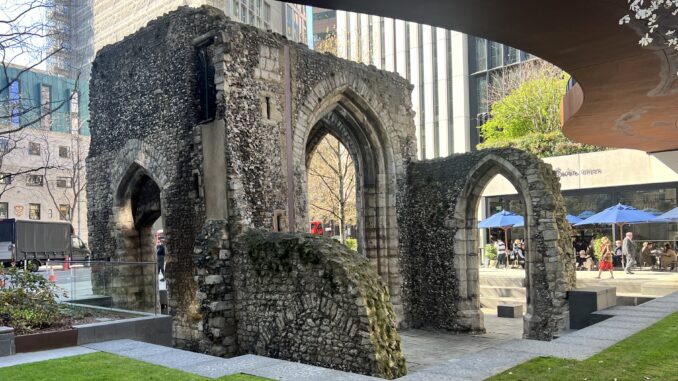
Walk along the road called London Wall from Moorgate and in 100 metres or so you come to London Wall Place, and sat in the heart of this is a medieval ruin.
This is the tower of Elsyng Spital, all that remains of what was once the church for, in turn, a nunnery, a hospital, an Augustinian priory, a grand house, a college and the parish church of St Alphage’s.
Its stones have been witness to the shocks and tumults of London’s history, including the Black Death, the Reformation, the Great Fire and the Blitz.
“Spital” is short for “hospital” (see also ‘Spitalfields’: land attached to the hospital of St Mary’s priory to the east of the City), but don’t think of this in the modern sense of it being a place for the treatment of the sick. ‘Hospital’ here has the same root as ‘hostel’ or ‘hospitality’, and the Elsyng Spital was more of an alms house, a residence for the blind poor of London.
For more of this sort of stuff, follow StuffAboutLondon on social media. For details click here
Sign up here for my monthly newsletter, or follow me on Instagram, or the StuffAboutLondon Facebook page.
It was founded in 1331 by a City merchant called William Elsing on the site (and with the church) of a pre-Conquest nunnery called St Mary at Cripplegate, and in 1340 the ‘management’ of the hospital was taken over by a priory of the Augustinian order.
Tucked up against the City wall, it contained, as well as the church and its tower, cloisters, the hospital, dormitories, a cemetery and a great hall. Elsing succumbed to the Black Death in 1349 and was buried in the church, but the hospital and priory survived until they surrendered to the Crown in 1536 during Henry VIII’s Dissolution of the Monasteries.
The other buildings and the land of the priory were bought by Sir John (later Lord) Williams, Master of the Jewels and a masterful Tudor political operator (he held roles under Henry, Edward, Mary and Elizabeth, which is pretty good going). However, the church was acquired by the local parishioners to replace the near derelict parish church of St Alphage that had stood next to the priory.
The 1666 Great Fire damaged the church but it was repaired, and was used until 1774 when it was felt a full rebuilding had become necessary. The tower was retained, with the new building going up around it, and it continued as the parish church until the 20th century when it was damaged in a WW1 air raid. Subsequent to this, in 1923 the nave was demolished leaving just the tower and its 18th century porch.
The ‘Second Great Fire’ during the London Blitz on the night of 29/30 December 1940 saw the tower gutted by flames, and in the postwar development the upper levels of it along with the porch were removed, leaving the remains that we see today.

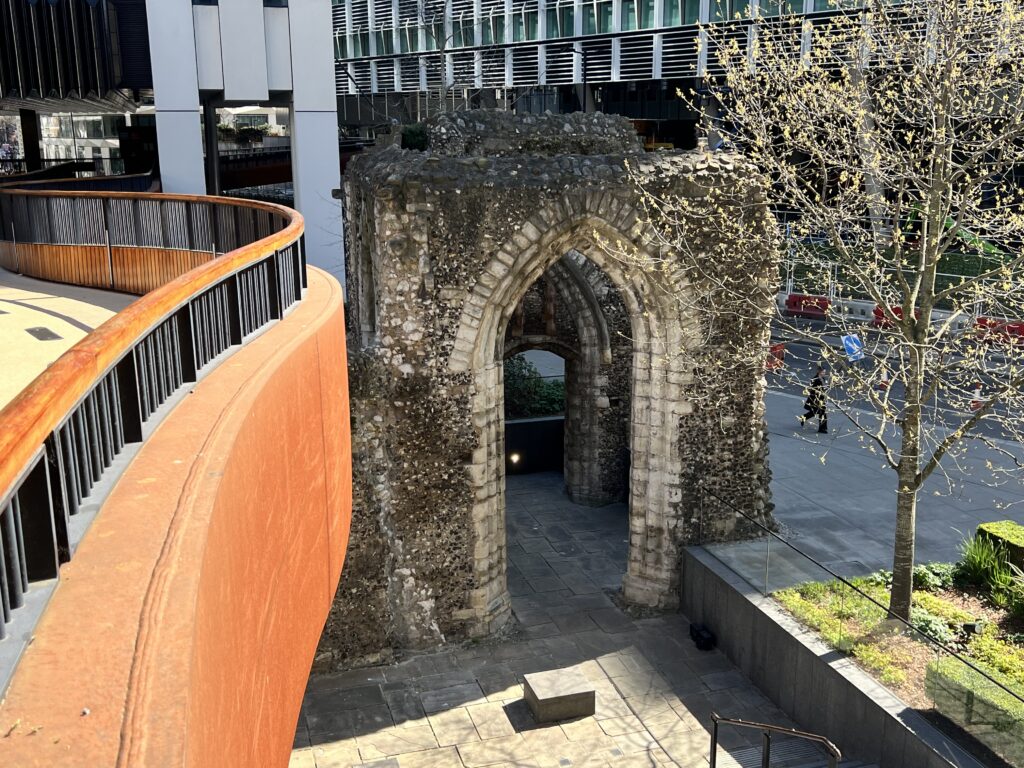
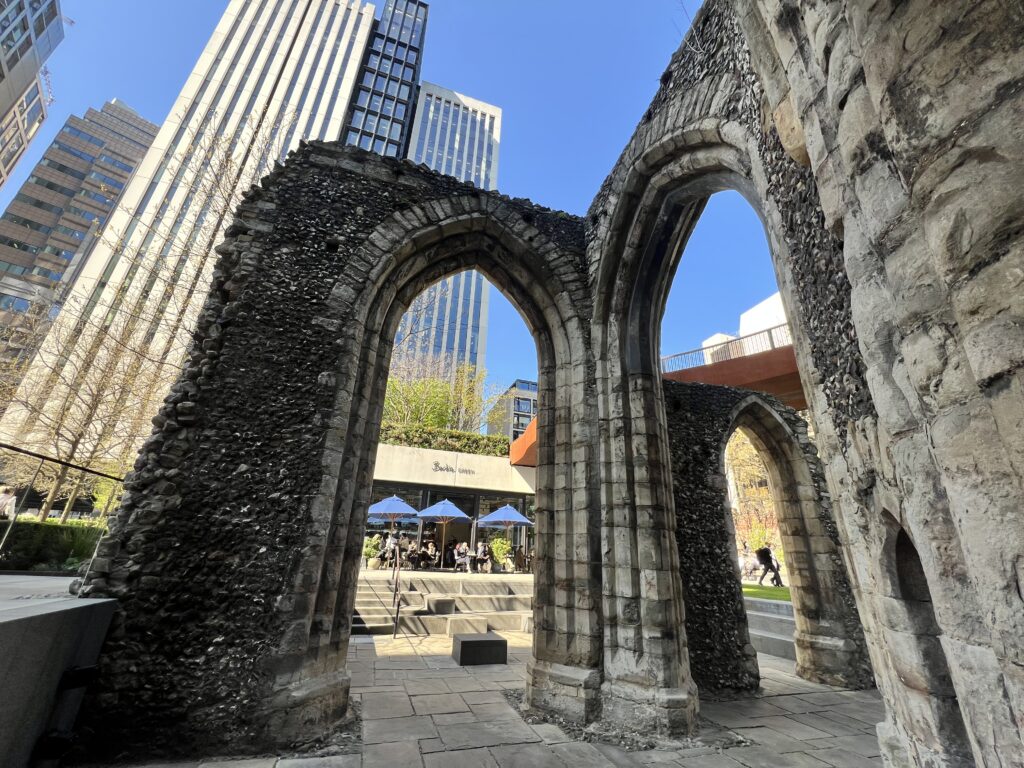
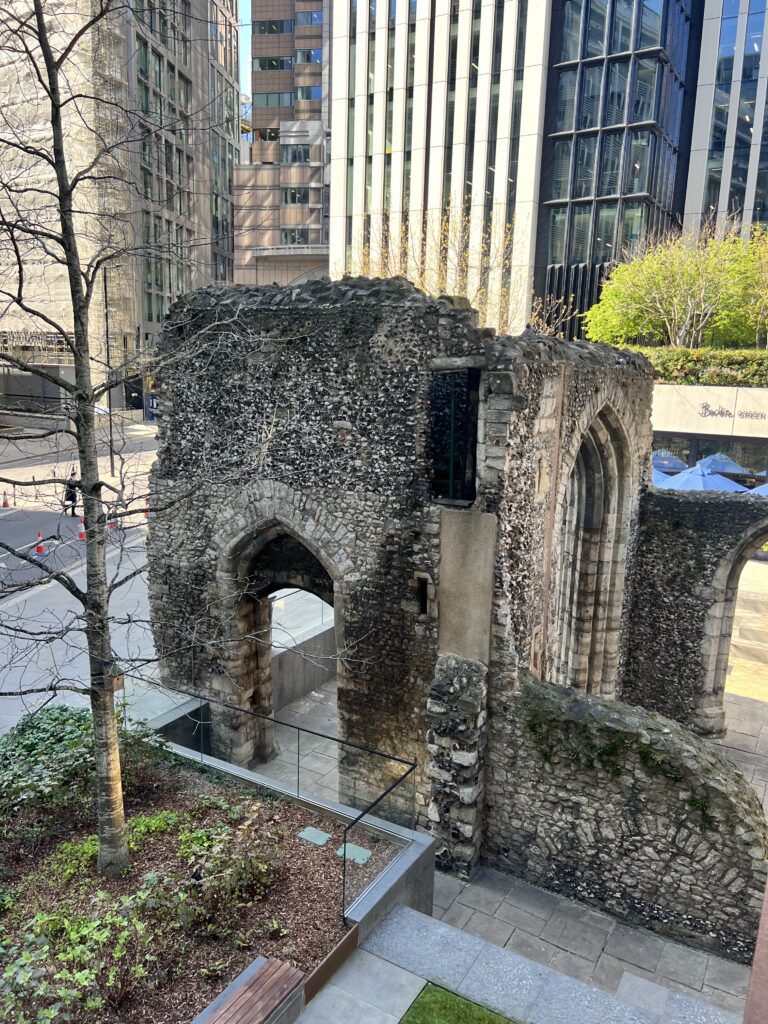
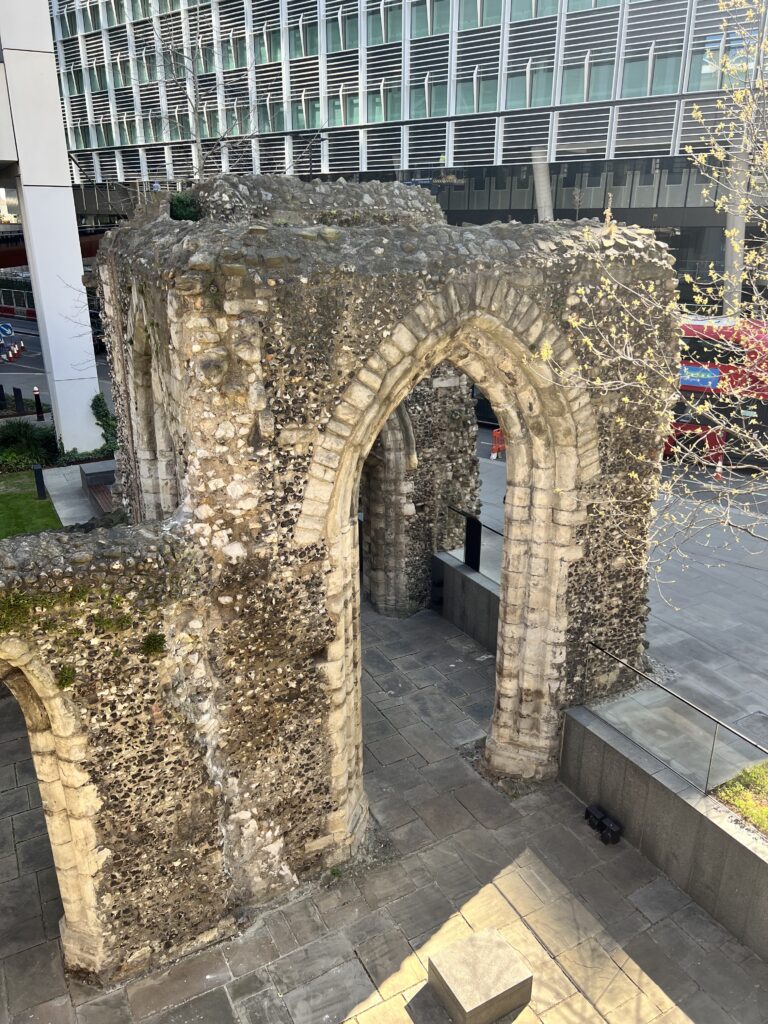
The recent rebuilding of London Wall Place (which is really rather good – some impressive buildings and a linked collection of green space) made a feature of the ruined structure, the cafe’s terrace coming up to its flint walls and the new ‘pedway’ (aerial walkway) gently curving around the tower.
There isn’t, truth be told, an awful lot to see when you go, but the gardens next to and above the tower are lovely places to sit, the pedway is an elegant addition to the built environment and you can allow the mind to wander and think about the layers of occupation on this one small spot that take you from the Romans through all the levels of the City’s history.

